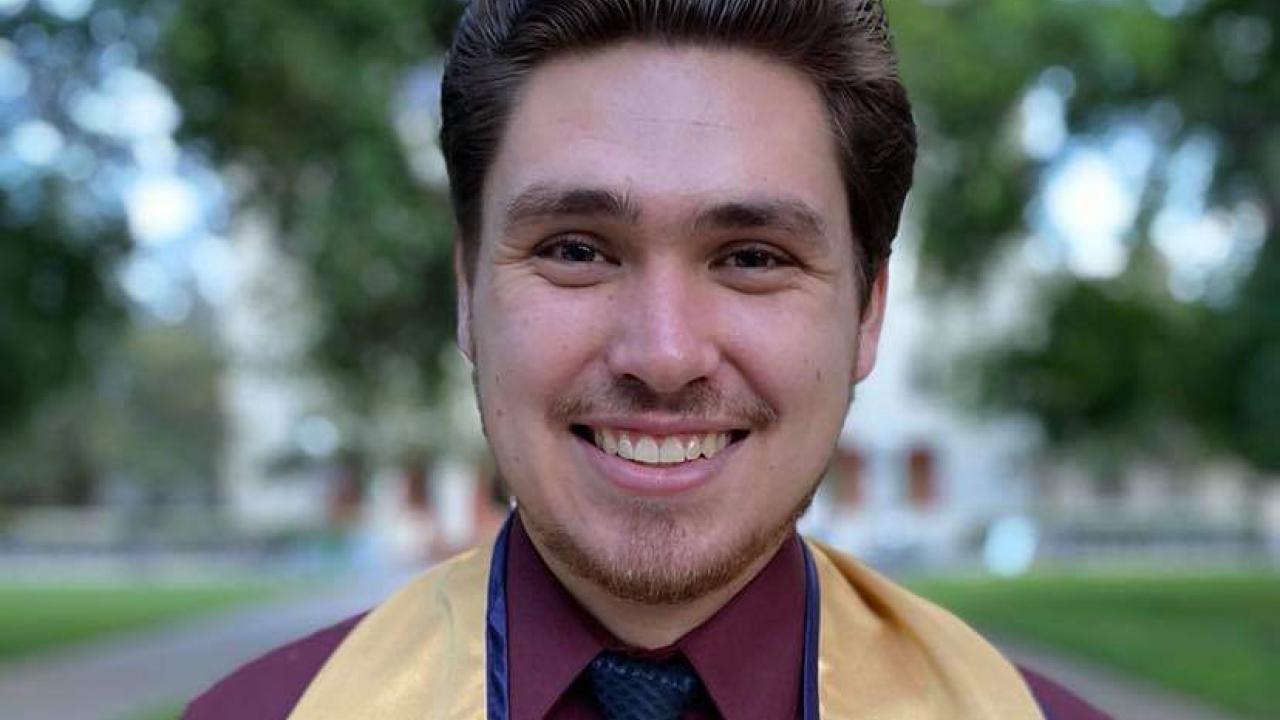
Matthew Self
Matthew Self , 4th-year Physics & Mathematics double-major
Email: mmself@ucdavis.edu
Matthew’s publication: Precision Weak Gravitational Lensing Using Velocity Fields: Fisher Matrix Analysis
Faculty mentor: Dr. David Wittman
Matthew’s research focuses on finding better ways to map the distribution of mass in the universe. This is accomplished by measuring the amount by which light passing by a massive object is bent by its gravity, distorting the images of objects behind the mass. He has discovered that a new tool called the Fisher Information Matrix is much more effective than traditional methods for measuring this gravitational effect.
Contributing to and publishing a manuscript required him to understand his complex project completely, and he learned an incredible amount about cosmology, data analysis, and statistics. He encourages other students who want to publish their work to find a supportive mentor in their field. “I would not have been able to publish without the guidance of my advisor, nor would I have learned nearly so much from the experience,” he says. He also warns that academic publishing can take much longer than one might expect, so prepare to have that project on your plate for quite some time!
Matthew enjoys both research and teaching immensely and looks forward to pursuing a career in academia, and this fall, he will begin his PhD in theoretical cosmology and high energy physics at UC Berkeley.
What is your major/minor and year?
I am in my 4th year majoring in physics and mathematics.
Tell me about your research, using terms that a non-scientist would understand.
The essential goal of my research is to find better ways to map the distribution of mass in the universe. This is difficult, because most of the mass in the universe is of a kind that we cannot see because it doesn't give off light. What we can do is measure the amount by which light passing by a massive object is bent by its gravity, distorting the images of objects behind the mass.This is a tricky process as the distortions we look for are usually very subtle, and so mass distributions cannot traditionally be measured very accurately. What we have done is to explore a new method to gain more information about the distortions by modeling properties of the object whose image has been distorted to measure this gravitational effect more precisely. We used a tool called the Fisher Information Matrix to understand how precise this new method could be in a variety of circumstances, finding that it is many times more effective than traditional methods.
Tell me about your future plans.
I plan to begin as a PhD student in theoretical cosmology and high energy physics at UC Berkeley in the fall. As I enjoy both research and teaching immensely I plan to pursue a career in academia thereafter.
What was it like to publish?
Publishing was an extremely invaluable experience. This was the first long-term research project I had completed, and it taught me an incredible amount about cosmology, data analysis, and statistics. In addition, the actual process of helping my advisor to write up a manuscript allowed me to grow substantially as I had to understand my project completely, from motivation to results, in order to effectively communicate it. Finally, as I plan to pursue an academic career it was useful to be introduced to the world of academic publishing rather early on in my career.
What advice do you have for other students who want to publish their work?
I would advise students that if they have done work they think might be publishable to find and consult a supportive mentor in their field. I would not have been able to publish without the guidance of my advisor, nor would I have learned nearly as much from the experience. Additionally, the process of publishing takes much longer than one might expect, so be sure to prepare to have that project on your plate for quite some time.
